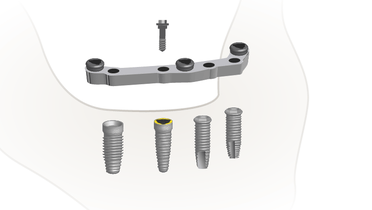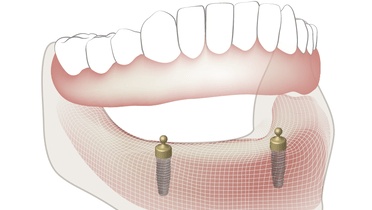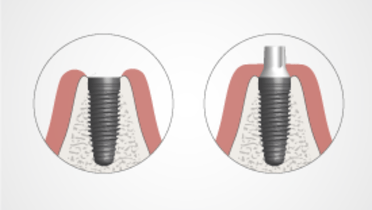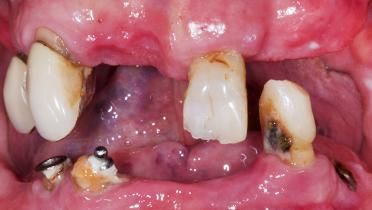-
0
Patient Assessment
- 0.1 Patient demand
- 0.2 Overarching considerations
- 0.3 Local history
- 0.4 Anatomical location
- 0.5 General patient history
-
0.6
Risk assessment & special high risk categories
- 5.1 Risk assessment & special high risk categories
- 5.2 age
- 5.3 Compliance
- 5.4 Smoking
- 5.5 Drug abuse
- 5.6 Recreational drugs and alcohol abuse
- 5.7 Parafunctions
- 5.8 Diabetes
- 5.9 Osteoporosis
- 5.10 Coagulation disorders and anticoagulant therapy
- 5.11 Steroids
- 5.12 Bisphosphonates
- 5.13 BRONJ / ARONJ
- 5.14 Radiotherapy
- 5.15 Risk factors
-
1
Diagnostics
-
1.1
Clinical Assessment
- 0.1 Lip line
- 0.2 Mouth opening
- 0.3 Vertical dimension
- 0.4 Maxillo-mandibular relationship
- 0.5 TMD
- 0.6 Existing prosthesis
- 0.7 Muco-gingival junction
- 0.8 Hyposalivation and Xerostomia
- 1.2 Clinical findings
-
1.3
Clinical diagnostic assessments
- 2.1 Microbiology
- 2.2 Salivary output
-
1.4
Diagnostic imaging
- 3.1 Imaging overview
- 3.2 Intraoral radiographs
- 3.3 Panoramic
- 3.4 CBCT
- 3.5 CT
- 1.5 Diagnostic prosthodontic guides
-
1.1
Clinical Assessment
-
2
Treatment Options
- 2.1 Mucosally-supported
-
2.2
Implant-retained/supported, general
- 1.1 Prosthodontic options overview
- 1.2 Number of implants maxilla and mandible
- 1.3 Time to function
- 1.4 Submerged or non-submerged
- 1.5 Soft tissue management
- 1.6 Hard tissue management, mandible
- 1.7 Hard tissue management, maxilla
- 1.8 Need for grafting
- 1.9 Healed vs fresh extraction socket
- 1.10 Digital treatment planning protocols
- 2.3 Implant prosthetics - removable
-
2.4
Implant prosthetics - fixed
- 2.5 Comprehensive treatment concepts
-
3
Treatment Procedures
-
3.1
Surgical
-
3.2
Removable prosthetics
-
3.3
Fixed prosthetics
-
3.1
Surgical
- 4 Aftercare
Overdenture retention devices, overview
Key points
- Implant overdenture attachment systems are comprised of two parts, one part connected to the implant/bar and the other within the prosthesis. The matrix is the receptacle component and a corresponding patrix fit closely either mechanically or by friction
- Ball anchors and locators are popular since they offer simple protocols and can be built into existing or new prostheses
- Bar constructions offer design flexibility for different situations and optimal prosthetic teeth positioning
- Bar constructions offer more retention and stability, but more prevalence for mucositis because of reduced cleaning access
Attachment selection
The relative merits of different prosthodontic treatment objectives - resilient versus rigid attachments - are controversial and empirical. A resilient retention mechanism is recommended on the assumption that this will protect implants from overload; while in vivo measurements from patients with 2 mandibular implants supporting an overdenture, failed to reveal a preference of one type of anchorage device or retention mechanism over another. It appears that most commonly used mechanisms are all equally efficient in spite of some dentists’ strong belief that bar attachment mechanisms contribute better to a shared loading between implants and denture-bearing tissues.
Attachment selection has an influence on the stability of the prosthetic construction. Single components leave the implants unsplinted. When placed, the overdenture will then stabilize the implants (secondary splinting). A bar construction splints the implants directly together, also without the overdenture placed (primary splinting), providing higher stability to implants and prosthesis.
Attachment component design characteristics
Implant overdentures attachment systems are comprised of two parts: the matrix being the receptacle component, and a corresponding patrix that fits closely within the matrix, either mechanically, or with a friction fit. One part of the attachment system is usually connected to the implant and the other incorporated within the undersurface of the overdenture. The patrix designs take the form of a connecting bar/s or free-standing ball/magnetic abutments. The matrix designs are adjustable and/or replaceable, are mechanical, friction fit or magnetic, and usually take the form of clips for bars; metal lamellae; plastic/nylon caps springs, or rubber O-rings for ball abutments; keepers or retainers for magnetic abutments. The range of available attachment systems permits dentists and dental technicians to select a retentive mechanism that reflects personal experience and preference, plus necessary patient considerations e.g. digital dexterity.
Ball anchors and Locator attachments
Ball anchors and locators are popular since their use precludes complex protocols or laboratory technology. They can be built into existing or new prostheses and are easily used with 2 or more inter-foramina mandibular implants. However, in the maxilla, 4 or more well-distributed implants over the entire arch are required. Connection of maxillary overdentures to two implants should preferably be avoided since it has been shown to result in adverse occlusal loading outcomes associated with compromised osseointegration and eventual implant failure.
Using single anchors does not compensate for poorly aligned implants since non-parallel axes compromise the insertion path. Latter is associated with rapid wear of matrices or patrices of ball anchors, as well as locators. Furthermore, overgrowth of the mucosa on to the shoulder of the ball anchors may occur and scrupulous circum-abutment hygiene is required. Ball or magnetic abutments facilitate simple procedures, as opposed to making a bar.
Bar attachments
Bar constructions provide more stability of the prosthesis and require less maintenance effort in comparison to individual abutments. If only 2 implants are connected a round bar can be used to allow rotation leading to a hinging design of the prosthesis. It has to be considered that bone loss in the posterior part of the jaw leads to the necessity of relining in a high number of prosthesis.
If 4 implants are primary connected by bars, extensions of up to 10 mm can be made to improve stability, retention, ease of chewing and overall patient comfort and satisfaction.
Bar overdentures require more vertical space than fixed ones leading to reducing the available vertical height..















